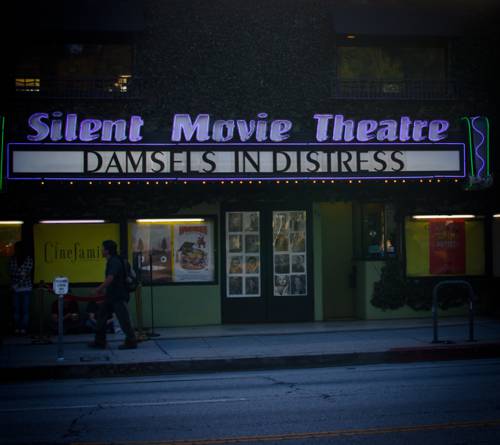
FAQ About Influence of Silent Theater in Modern Performances

What is silent theater?
Silent theater is a form of performance art that relies primarily on physical expression, gestures, and mime rather than spoken dialogue. It emphasizes the visual and physical aspects of storytelling, using body language, facial expressions, and movement to convey messages and emotions. This form of theater often includes mime artists and can be accompanied by music or sound effects to enhance the narrative.

How has silent theater influenced modern performances?
Silent theater has influenced modern performances by highlighting the power of non-verbal communication in storytelling. Elements such as expressive gestures, physical comedy, and visual symbolism have been integrated into various contemporary art forms, including films, dance, and avant-garde theater. This influence emphasizes the universality of human emotions and narratives, transcending language barriers.

What are some examples of modern performances inspired by silent theater?
Modern performances inspired by silent theater include contemporary dance pieces, mime shows, and experimental theater. Works by physical theater groups such as Cirque du Soleil incorporate silent theater techniques. Additionally, filmmakers like Charlie Chaplin and Jacques Tati have famously used silent theater methods to create visual-driven stories.

How does silent theater enhance non-verbal communication skills in performers?
Silent theater enhances non-verbal communication skills by training performers to express complex emotions and narratives through physical means. Performers develop heightened body awareness, controlled gestures, and facial expressions, allowing them to convey messages without words. This training can improve both their stage presence and their ability to connect with audiences.

Are there any contemporary artists known for using silent theater techniques?
Yes, there are contemporary artists known for using silent theater techniques. Mime artists like Marcel Marceau have been influential, as well as theater companies like Complicité and DV8 Physical Theatre. These artists and groups use body language and physical expression to create engaging and profound performances.

What role does music play in silent theater?
Music plays a crucial role in silent theater by setting the mood and enhancing the emotional impact of a performance. It helps to guide the audience's emotions and accentuate the mime and physical expressions on stage. Music can also replace spoken dialogue, offering cues and creating an immersive atmosphere for the audience.

Can silent theater be considered a universal form of communication?
Yes, silent theater can be considered a universal form of communication because it transcends language barriers through the use of non-verbal elements. Its reliance on facial expressions, gestures, and movements allows audiences from diverse linguistic backgrounds to understand and appreciate the story being told.

What is the historical origin of silent theater?
Silent theater has roots in ancient traditions such as Greek and Roman pantomime, Commedia dell'arte, and various forms of Asian theater like Japanese Noh and Kabuki. It evolved significantly in the 19th and early 20th centuries, with artists like Étienne Decroux and later Marcel Marceau formalizing mime as a respected art form.

How do performers train for silent theater?
Performers train for silent theater by focusing on physical techniques, such as body movement, mime, and facial expression exercises. Training often involves studying gesture, balance, and rhythm. Courses in clowning, dance, and mask work can also be integral, as they teach performers how to convey complex narratives without relying on spoken word.

Why is silent theater important in today's performance arts?
Silent theater is important in today's performance arts because it emphasizes the power of visual storytelling and physical expression. It encourages artists to explore innovative ways of communication, making art more accessible. Silent theater challenges performers to engage audiences through universal human experiences, broadening the appeal of live performances.

What is the connection between mime and silent theater?
Mime is a significant component of silent theater, focusing on storytelling through non-verbal gestures and expressions. While silent theater includes various forms of non-verbal performance, mime specifically uses exaggerated movements to communicate detailed stories and emotions, often employing humor and pathos.

How do audiences typically react to silent theater performances?
Audiences typically react to silent theater performances with heightened emotional engagement, as the absence of dialogue encourages them to focus intently on visual cues and physical expression. Many viewers appreciate the creativity and skill involved in conveying complex narratives without words, finding it both entertaining and thought-provoking.

Have any famous films been influenced by silent theater?
Yes, several famous films have been influenced by silent theater. Directors like Charlie Chaplin, Buster Keaton, and Jacques Tati incorporated elements of silent theater into their films, using physical comedy and visual storytelling to convey narratives effectively without relying heavily on dialogue.

Is silent theater still popular today?
Silent theater remains popular today, with its techniques continuing to inspire modern performance art, film, and theater. Artists and companies around the world, including reputable mime troupes and physical theater groups, perpetuate its legacy. The enduring appeal lies in its universal storytelling ability and the skill required to perform it effectively.

What are some typical elements used in silent theater?
Typical elements of silent theater include exaggerated gestures, facial expressions, mime, physical comedy, and the strategic use of props. Music and sound effects often accompany performances, enhancing the narrative and emotional impact. These elements work together to convey stories and emotions without spoken words.

How does silent theater promote diversity in storytelling?
Silent theater promotes diversity in storytelling by transcending linguistic and cultural boundaries. Its emphasis on universal human emotions and experiences allows stories to be told and understood across different cultures. This inclusivity encourages a broad range of narratives and perspectives, enriching the global arts scene.

What challenges do performers face in silent theater?
Performers in silent theater face challenges such as conveying complex emotions and stories without words, requiring acute physical control and expression. They must also engage audiences effectively using only visual and auditory elements, which demands creativity, timing, and understanding of movement dynamics.

How has technology affected modern silent theater performances?
Technology has impacted modern silent theater by enhancing visual and auditory aspects through lighting, projection, and sound design. These advancements allow for more dynamic and immersive experiences, enabling performers to create vivid stories and settings without relying on traditional dialogue or sets.

Are there differences between traditional and modern silent theater?
Traditional silent theater often focused on classical mime and pantomime techniques, whereas modern silent theater may incorporate multimedia elements and contemporary themes. While the core principles of physical expression remain, modern performances might use digital effects or integrate with other forms like dance or narrative storytelling.

What impact does silent theater have on audience engagement?
Silent theater significantly impacts audience engagement by compelling them to actively interpret the visual and physical cues presented. This form of theater draws viewers into a more participatory role, heightening attention and emotional investment as they piece together the narrative through observation.
